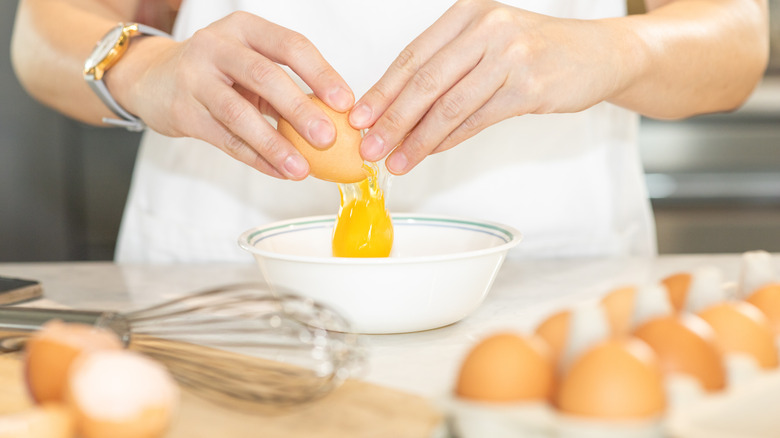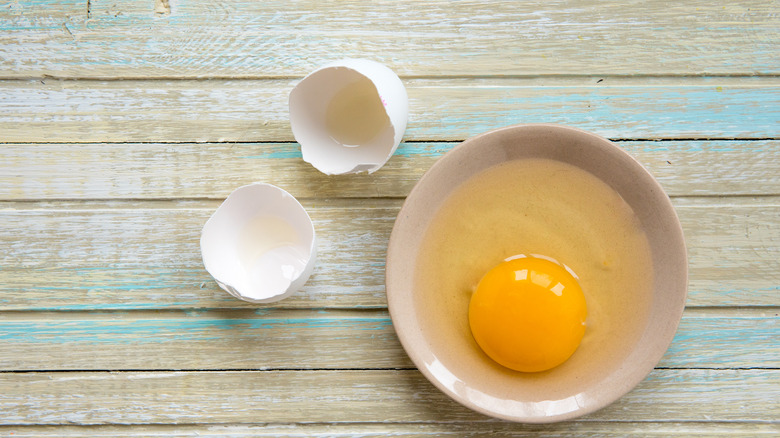There's A Better Way To Crack Eggs And You've Probably Never Thought Of It
Whether you're cracking an egg for a sunny-side-up fry, baking, or preparing one of your favorite fancy egg dishes, the desire of every cook is to score a clean break and pour a shell-free egg into the bowl. What's more, depending on the recipe, an intact yolk may also be required. There are two ways you could go about this deceptively simple process. You could strike the egg against the edge of your bowl or the pan or tap it on a flat surface. But the best way you've probably never thought of is the egg drop.
At first, this might sound like a risky (read: messy) move where you'd imagine ending up with a completely smashed egg. However, the method is surprisingly effective. The idea is that when you drop an egg from a small height onto a hard and flat surface, the egg's weight and force of gravity create a force that cracks the shell evenly on impact. Here's how to do it.
First, identify a clean and hard surface. The best is a glass plate, but you can also go for the pan you'll use to fry the egg afterward. Only avoid the counter, in case you get a bit of egg spill in the process. Take one egg, hold it up about six inches above the surface in a horizontal position, and let it drop. Pick up the egg, press your thumbs where there's a dent while pulling apart the shells, and release the egg into a small bowl.
Why the egg drop works effectively
Unlike the jagged edges you get from tapping an egg on a bowl's edge or counter, this egg drop technique is the perfect egg-cracking hack for a clean split that reduces the likelihood of shell fragments breaking off and landing in your bowl. The reason behind this clean break is that gravity imparts a moderate amount of force while the flat surface doesn't push the shell inwards as the egg lands down. As a result, the thin membrane usually found right underneath the shell remains intact, and the shell stays put, reducing the chances of shattering into tiny pieces.
Another advantage of this egg-cracking technique is you're less likely to puncture the yolk. This is a huge plus if you need whole yolks for your recipe. The reason behind the intact yolk is that the flat surface doesn't poke into the egg the way, for example, the lip of a bowl or the pan's rim is likely to do when tapping the egg on those edges.
Additionally, the egg drop is the most foolproof method because you don't need to know and regulate the amount of force you'll use to whack the egg against the surface. All you do is release the egg from your hand from a small height. With the tapping methods, there's always the risk of either hitting the egg too lightly, forcing you to repeat the process, or too hard and smashing the entire shell.

